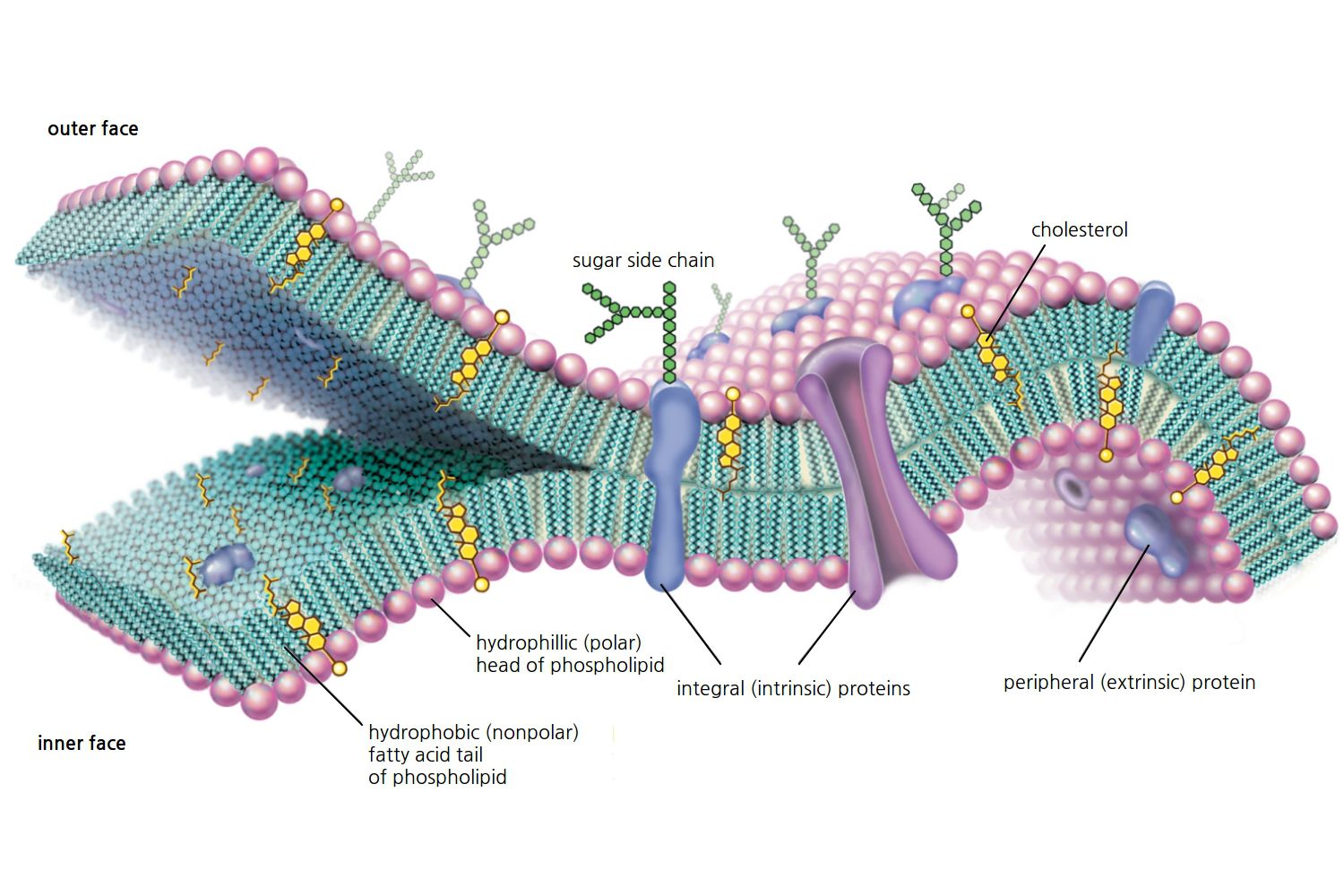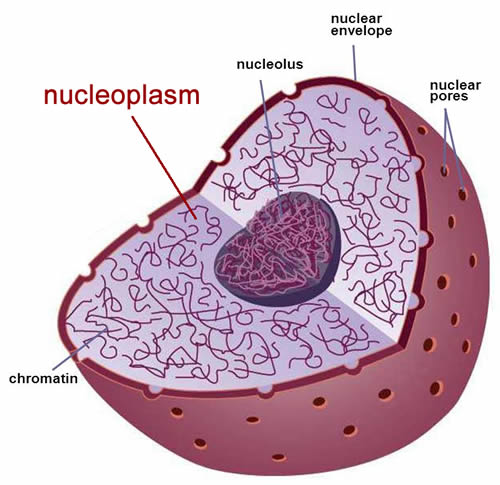Cells: Definition, Structure, Function, Parts Of The Cell
DEFINITION OF CELLS
Cells are the smallest structural and functional units of living organisms in the organizational level of life. The word cell comes from the Greek word "Cellula" or "cella" which means empty space. The body of the organism consists of the organ system, organ system composed by organs, organs formed by tissues, and tissues formed from cells. The point is that every living thing has a cell that is the basic constituent of their body. Cells organize and process all the information so that it can perform the function of life in living things.
From the definition of the cell above, then the virus (often modified including living things or not) is not included in living things. Why ? Because the virus is aseluler that has no cells. Based on the number of cells, living things composed by many cells are called multicellular organisms, while living things composed by a single cell are called unicellular organisms.
CELL FUNCTIONS
As mentioned above, the cell is the regulator and controller of all the body activities of living things, both conscious and unconscious. This function is run not only by one cell, but a group of cells that form the network, then the network with the same purpose will form the organ, then some organs form the organ system, and organ systems form living things (organisms). Robert Hooke was the first scientist to observe cells by accident, he observed the oak cell from the oak plant under a microscope and then found empty hollow-like cavities, then called cells.
In general, the cell function which also becomes the cell theory is as follows:
- Cells as a functional unit of the body (The theory proposed by Max schultze)
- Cells as structural units of the body (Theories proposed by Mathias Jacob Schleiden and Theodor Schwaan)
- Cells as a unit of growth and development of living things (Rudolf Virchow)
- Cells as a unitary heredity (inheritance of nature) that can degrade its nature to offspring
(The theory was introduced by Walter Sutton and Theodor Boveri)
CELL STRUCTURE AND PARTS OF CELL
In general, the cell consists of 3 main parts, namely cell membrane, cytoplasm, and cell nucleus. Cells also have solid components in the cytoplasm called organelles of cells. Organelles - cell organelles have their own functions. Here is an explanation of the Cells.
- Cell Membrane / Plasma Membrane
Cell membrane is a thin membrane that is the outermost part of the cell, the cell membrane is also often called plasmalema. The cell membrane is the part that governs the relationship between the components in the cell and the outer environment of the cell. Cell membrane consists of lipid (fat) in the form of phospholipids, proteins, and carbohydrates with different compositions depending on the type of cell. As the name implies, phospholipids (fatty compounds) are composed by hydrophilic phosphates (like water) and hydrophobic lipids (fear of water).
Cell membranes are composed by each paired phospholipid (fat) so it is also called lipid bilayer. Proteins belonging to the cell membrane are the protein of the province (peripheral) and intrinsic (integral) proteins. The extrauterine protein (peripheral) is a protein attached to the outer layer of the membrane, whereas the intrinsic protein (integral) is a protein that penetrates the membrane. The bond between the phospholipids and the extrinsic protein will form a membrane called lipoprotein. Cell membranes can have semipermiabel properties that are easily passed by various components, can also be selective permiabel which means can only be passed by certain ions only.
Some cell membrane functions include the following:
- Protect and wrap cell contents.
- Separate and control the inner cell relationships with outer environments.
- Regulate the exchange (transport) of substances from within the cell exit or vice versa.
- Place of chemical reaction.
- Cytoplasm (Cell Liquids)
The cytoplasm or cell fluid is the matrix present in the cell membrane other than the nucleus of the cell (nucleus). The main constituent of the cytoplasm is water that acts as a solvent and the site of chemical reactions. The cytoplasmic matrix is a colloidal (liquid) cytosol (a mixture of two homogeneous substances). The cytoplasmic matrix may change from the gel phase (semisolidate) to the sol (liquid) phase. The cytoplasmic matrix has irritability (sensitivity to stimuli) and conductivity (capable of moving or continuing stimulation).
Some cell cytoplasm functions include the following:
- The site of chemical reactions and metabolism.
- As a place to maintain the function of cell life.
- Keeping things inside the cell.
- Set the transport of substances inside the cell.
- Energy formation.
*The place controls the movement of the cell.
These functions are performed by the cell organelles. As we explained earlier that in the cytoplasm there are solid components called cell organelles that have their own specific functions. Cell function is to support the life of the cell.
Some Organel cells include:
- Mitochondria, serves to produce energy.
- Lysosomes, serves to digest in cells.
- Ribosome, serves as a place of protein synthesis.
- Endoplasmic Reticulum, serves to Transport various substances in the cell.
- Golgi body, serves for protein synthesis and associated with the work of ribosomes and endoplasmic reticulum.
- Microtubules, protect and keep the cell shape.
- Microfilaments, play a role in the process of cell movement.
- Chloroplast, serves as a site for photosynthesis in plants.
- Sentrosom (Sentriol), as a place of cell division.
- and others.
3. Cell Core (Nucleus)
The cell nucleus is the part that is generally round or oval and is often located in the center of the cell or on the edge of the cell. The nucleus is the most important part of cell life. The nucleus has a central function as the controlling center of all cell activity. The cell nucleus is protected by a wall resembling a cell membrane. This protective structure is called the core membrane.
there are several parts of the nucleus, namely:
a. Nucleolus
Nucleolus is a round structure composed by filaments and component granules. The core child contains RNA, DNA and several proteins that function in ribosome assembly.
In general the function of the nucleus (cell nucleus) is as follows:
- As a regulator and control center of all cell activities.
- The storage of genetic information for the organism.
- Start and end an action performed by the cell.
- The place of occurrence of part of the process of cell division.
b. Nucleoplasm (Core Liquid)
Nucleoplasm is a thick liquid resembling jelly containing proteins, ions, enzymes and other components. Nucleoplasms have complex structures and functions because of their many components.
c. Chromatin
Chromatin is a string of fine yarns found in the cell nucleus. Chromatin contains DNA, the substance that stores all the genetic information of a living thing. When the cell division occurs, chromatin will shorten, thicken, and circle to form a chromosome.







